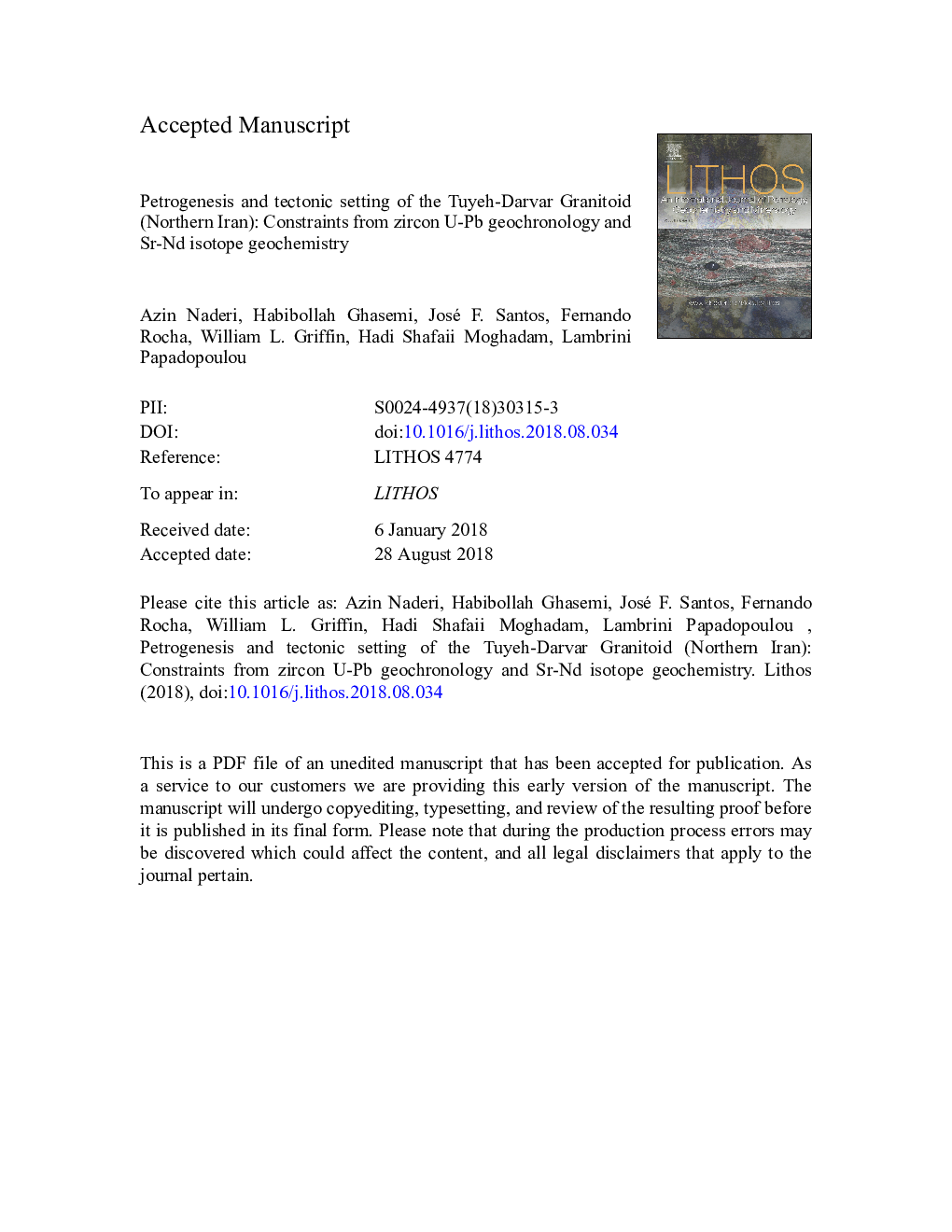| Article ID | Journal | Published Year | Pages | File Type |
|---|---|---|---|---|
| 10119984 | Lithos | 2018 | 66 Pages |
Abstract
Tuyeh-Darvar granitoid, which outcrop ca 45 km Sw of Damghan city, in the Eastern Alborz zone, comprise mainly the pluton emplaced into the Barut Formation of Lower Cambrian ages. Zircon U-Pb ages show Carboniferous ages (325â¯Â±â¯3â¯Ma) for the formation of this granitoid. The granitoid is mostly metaluminous, ferroan and alkalic monzonite to monzodiorite. "These rocks have high values of FeOT/MgO and Ga/Al, high concentrations of K2O+Na2O, low abundances of MgO and transitional elements. Plots normalized to chondrite and primitive mantle compositions show strong enrichments of LREE relative to HREE and of LILE relative to HFSE, accompannied by negative anomalies of Nb and Sr."They contain Fe-rich hydrous mafic minerals and magnetite. These features are typical of A-type granites. Sr-Nd isotopic geochemistry, with initial ÉNd values from â1.1 to â1.5 and initial 87Sr/86Sr ratios between 0.70562 and 0.70678, are consistent with magmatic differentiation from mafic melts produced from an enriched mantle source. However, other models such as melting of mafic crust or mixing of components from depleted mantle and continental crust cannot be discarded. On the basis of the U-Pb zircon age (325â¯Â±â¯3â¯Ma) and the known magmatic tectonic regime in Iran during the Paleozoic, it is suggested that the pluton, formed in a rift environment related to extensional structures of the Alborz block in Early Carboniferous time.
Related Topics
Physical Sciences and Engineering
Earth and Planetary Sciences
Geochemistry and Petrology
Authors
Azin Naderi, Habibollah Ghasemi, José F. Santos, Fernando Rocha, William L. Griffin, Hadi Shafaii Moghadam, Lambrini Papadopoulou,
